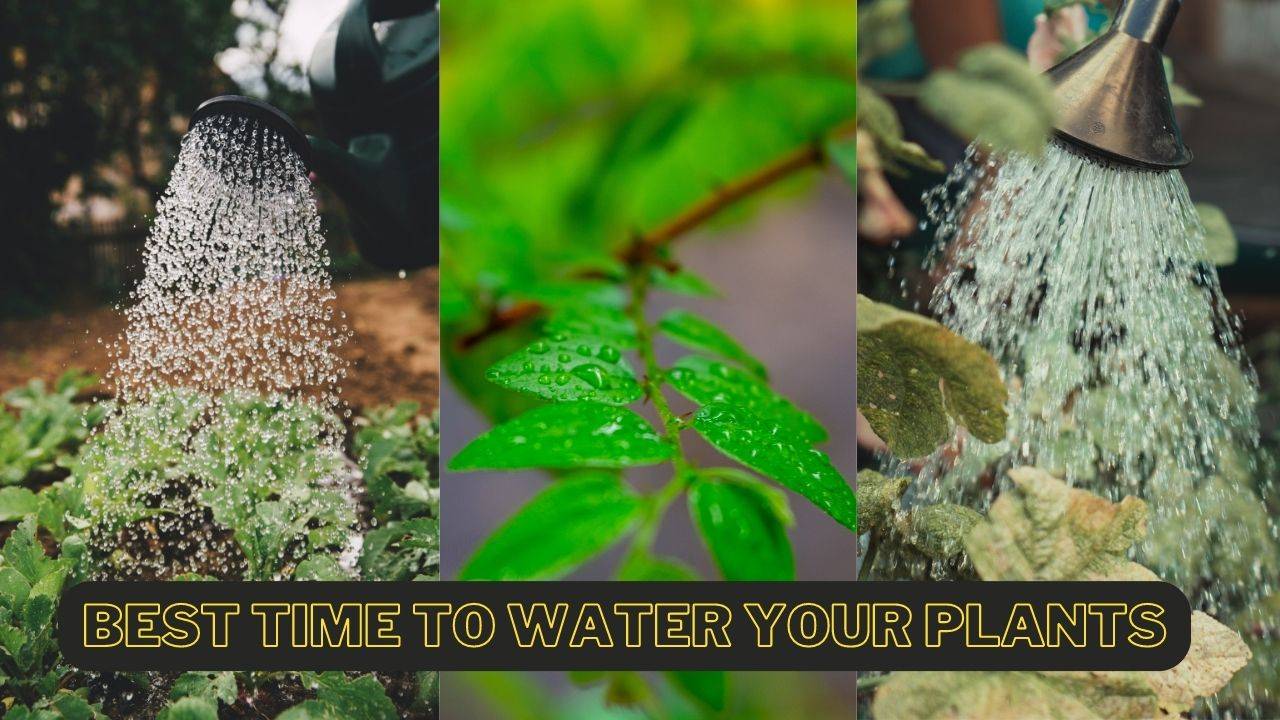
Watering your plants is a crucial aspect of maintaining a healthy and thriving garden. While it might seem like a simple task, the timing of your watering can significantly impact the overall health and growth of your plants.
In this comprehensive guide, we'll explore the best times to water your plants, along with some important pointers to keep in mind.
1. Morning Delight- One of the optimal times to water your plants is in the early morning, just as the sun is rising. This allows the plants to absorb the moisture they need to kickstart their daily growth cycle. Watering in the morning helps prevent the growth of mold and mildew by allowing the foliage to dry out during the day. Additionally, cooler morning temperatures reduce the risk of water evaporation, ensuring that more water reaches the plant roots.
2. Avoid Midday Heat- Watering your plants during the hottest part of the day, usually from late morning to early afternoon, is generally not advisable. The intense sun and high temperatures can cause rapid evaporation, meaning that a significant portion of the water you apply might not even reach the roots. Moreover, water droplets on the leaves can act as magnifying glasses, intensifying the sun's rays and potentially causing sunburn on the foliage.
3. Evening Care- Watering your plants in the evening, just before the sun sets, is another viable option. The temperatures are cooler, and there's less chance of evaporation compared to midday. However, you should be cautious not to overwater in the evening, as excess moisture during the night can create a favourable environment for fungal diseases to develop. Watering the soil instead of the leaves can help mitigate this risk.
4. Consider Plant Types- Different plants have varying water requirements based on their species, size, and stage of growth. Research the specific needs of your plants to determine the best watering schedule. For instance, succulents and cacti thrive with infrequent but deep watering, while some tropical plants prefer more consistent moisture. Grouping plants with similar water needs together in your garden can make watering more efficient.
5. Check the Soil Moisture- Before reaching for the watering can, it's essential to check the soil moisture. Stick your finger about an inch into the soil and if it feels dry, it's time to water. If it's still moist, hold off for a day or two. Overwatering can be as detrimental as underwatering, as it can lead to root rot and other issues.
6. Watering Techniques- How you water is just as important as when you water. Use a soaker hose, drip irrigation, or a watering can with a fine nozzle to deliver water directly to the soil, minimizing water wastage and avoiding wetting the leaves unnecessarily. Watering at the base of the plant ensures that the water reaches the roots where it's needed the most.
7. Newly Planted vs. Established Plants- Newly planted vegetation requires more frequent watering to help them establish their root systems. For the first few weeks, check the moisture levels daily and water as needed. As plants mature, their root systems become more efficient at accessing water from deeper soil layers, allowing you to space out your watering sessions.
8. Rainfall Consideration- Take into account the natural rainfall your area receives. If you've had significant rainfall, you might be able to skip a watering session. Conversely, during dry spells, you might need to water more frequently. Keeping a rain gauge in your garden can help you accurately measure rainfall and adjust your watering schedule accordingly.
9. Wind and Humidity- Wind and humidity levels can influence the rate of water evaporation from your soil and leaves. On windy days, water can evaporate more quickly, necessitating more frequent watering. In low-humidity environments, plants lose moisture faster, so adjust your watering schedule accordingly.
10. Observe and Adapt- Gardening is an ongoing learning process. Observe how your plants respond to your watering routine and make adjustments as needed. Wilting, yellowing leaves, or stunted growth could indicate watering problems. Be flexible and adapt your watering habits to suit the changing needs of your garden.
In conclusion, the best time to water your plants largely depends on the specific needs of your garden and the plant types you're growing. Watering in the early morning or late afternoon is generally ideal to ensure efficient water absorption and minimize the risk of disease. However, consistently checking the soil moisture, considering weather conditions, and observing your plants' responses are key to developing an effective watering routine. With the right care and attention, you'll be rewarded with a flourishing and vibrant garden that brings beauty to your surroundings.
















